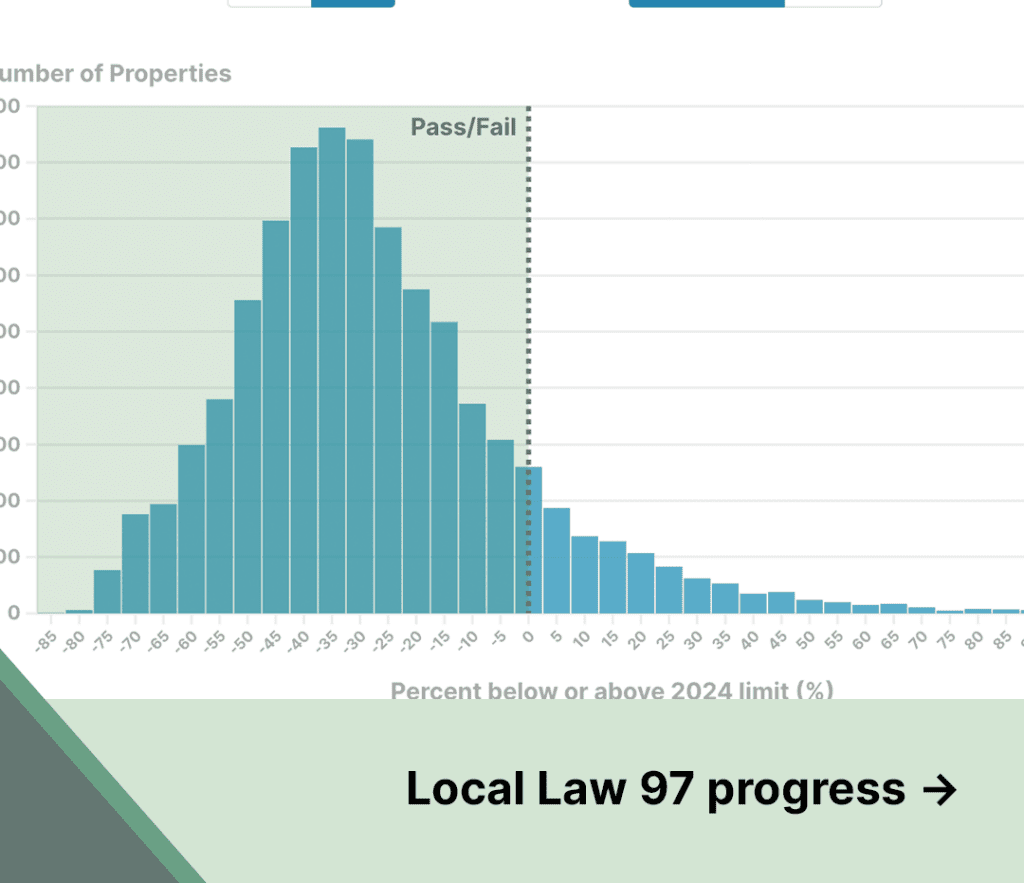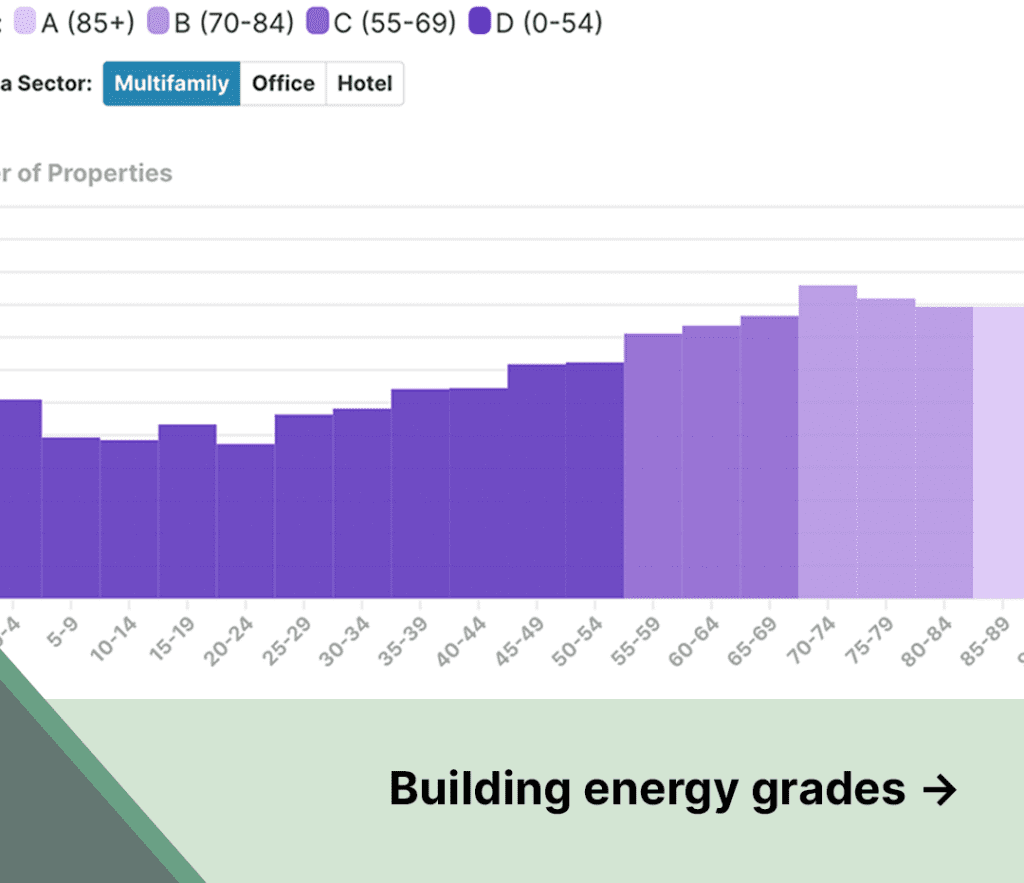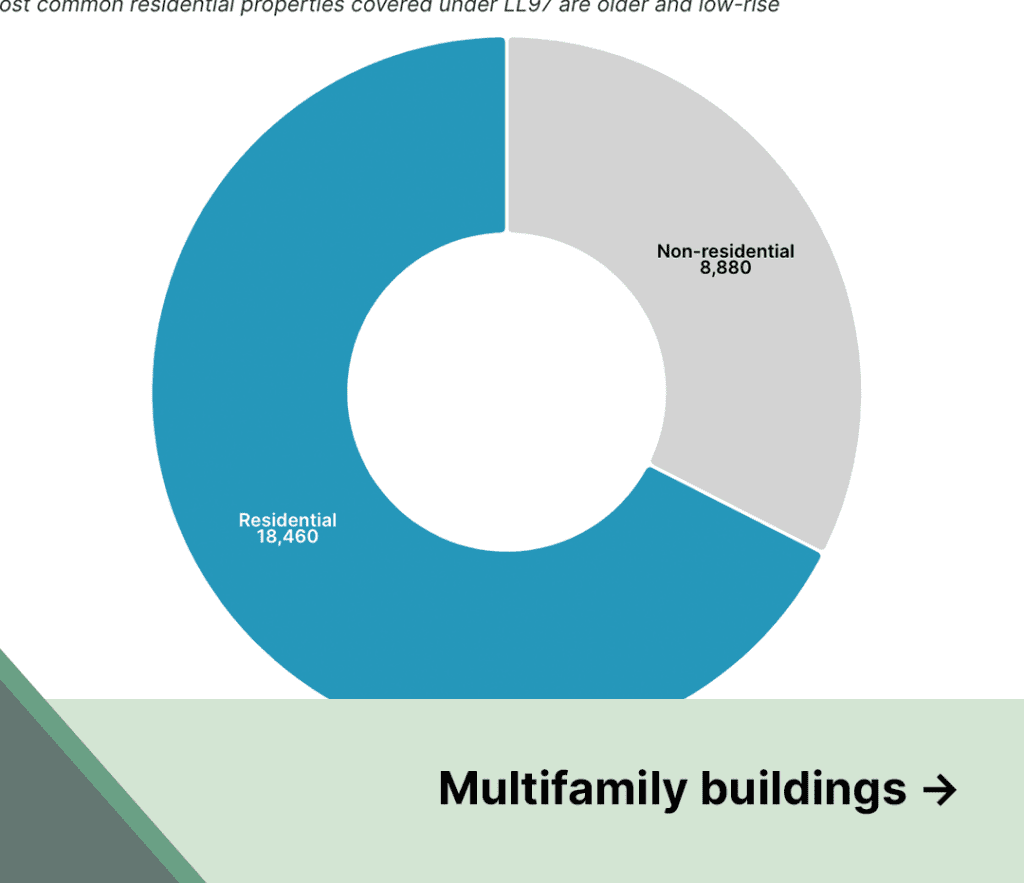Latest building energy use trends
NYC’s 2023 benchmarking data is here! See how building energy use is changing.
Updated with latest data December 2024
More than a third of New York City’s greenhouse gas emissions come from buildings over 25,000 square feet. Thankfully, NYC has been collecting data about the energy and water used by these large buildings—referred to as benchmarking data—since 2010. This data allows us to analyze how buildings are using energy today along with changes over time.
Energy use and carbon emissions from NYC’s largest buildings have fallen over the past 13 years. These metrics vary from year to year due to multiple factors, including the fuel mix for electricity generation and variable weather. However, they have both trended down due to more efficient energy use, improved district steam production and delivery, and accelerated fuel switching.
26%
Reduction in emissions from large buildings since 2010
NYC’s benchmarking data allows us to understand the factors that affect building energy use and how they’ve changed over time. One of the foremost factors is fuel switching: changing a building’s main energy source for heating and hot water. For the last decade, fuel switching has primarily been defined by natural gas replacing heavy fuel oil in most benchmarked buildings.
50%
Natural gas accounts for half of all energy used in NYC buildings
Legend
Size
Midsize: 25-50K SF
Large: 50-500K SF
Very large: 500K+ SF
Height
Low-rise: ≤ 7 floors
High-rise: > 7 floors
Age
Pre & Postwar: Before 1890
Pre-Energy Code: 1980-2011
Energy Code Era: After 2011
Energy use is often reported in energy-use intensity (EUI), the amount of energy used per area. The median value—with half the data points lying above it and half below—is most useful in describing how buildings compare to their peers.
Specifically, when you compare NYC’s multifamily buildings, there’s a strong correlation between EUI and age: older buildings use much more energy per square foot than those constructed in the last few decades.
This interactive data hub is made possible with generous support from Carrier



